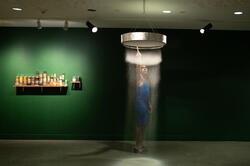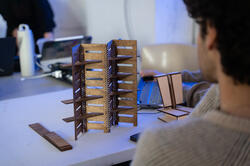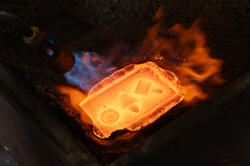The conceptual artist elevates the everyday through performance pieces and exhibitions like the one that transformed RISD’s Memorial Hall Gallery this fall.
New TLAD Course at RISD Positions Pedagogy as Source of Limitless Innovation

What if teachers treated their classrooms like art studios and their students like peers and collaborators? How might they reenvision the lecture, the syllabus, the lesson plan as invitations to create? Pedagogical Playgrounds: Classroom as Studio, an interdisciplinary fall elective offered through Teaching + Learning in Art + Design (TLAD), invites RISD students interested in teaching to redefine the space of pedagogy as one of endless creative potential.
Faculty member Falaks Vasa, who developed the course, begins every session with an emotional temperature check, inviting students to share their current challenges, joys, and hopes. After discussing the week’s readings—by such experimental educators and scholars as Paulo Freire, Fred Moten, and bell hooks—a different student is invited each week to teach the class a skill.
Graduate Photography student Tamara (T) Chapman MFA 26 PH—a former dancer and dance instructor—asks the class to stand and form a circle so they can learn the six classical ballet positions. They encourage them to close their eyes and imagine a string running through their bodies and holding them up straight. As they move through the positions, sometimes breaking into nervous laughter, Chapman offers continuous encouragement: “I can tell you have strength in your stance,” they assure one student.
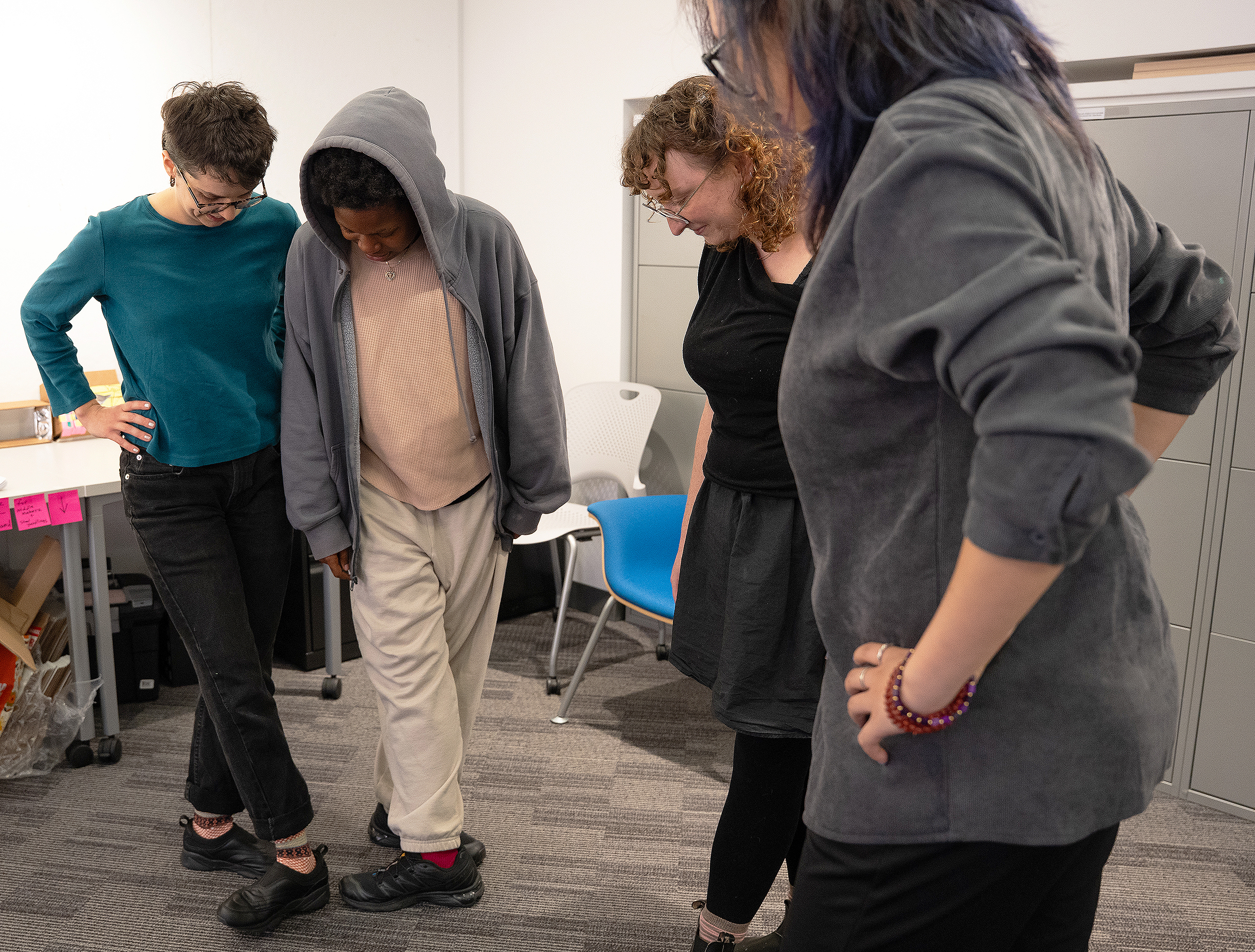

Other students have led workshops about reading and writing Chinese language characters and challenging notions of authority in the classroom. “These demos are opportunities for students to flex their teaching muscles, innovate with pedagogical techniques that might otherwise feel too risky, and receive feedback,” Vasa explains.
One of the course goals is to create and experiment with new, speculative assignments, syllabi, and other teaching methods that broaden pedagogical possibilities. Students shared inventive syllabi during an informal critique in late October. The assignment prompted them to consider which components of a syllabus are essential and how the syllabus reflects the logic or form of the class it serves.
Grad student Avrie Allen MFA 26 GD showed a syllabus in the form of a digitally printed silk purse for a speculative course titled Aestheticizing Aesthetics. “The course would deal with perception, awareness, play, bodily knowledge, and making (sometimes absurd) connections,” she explained, “and the purse—which is reproduceable—could serve as a syllabus for the class or exist as a standalone publication.”
“I like that it’s tangible and functional,” one student noted, “and that it engages with more than one sense, bringing the idea of your course to life.” Vasa expressed appreciation for Allen’s sense of whimsy and felt that the syllabus purse would make the course content more accessible.
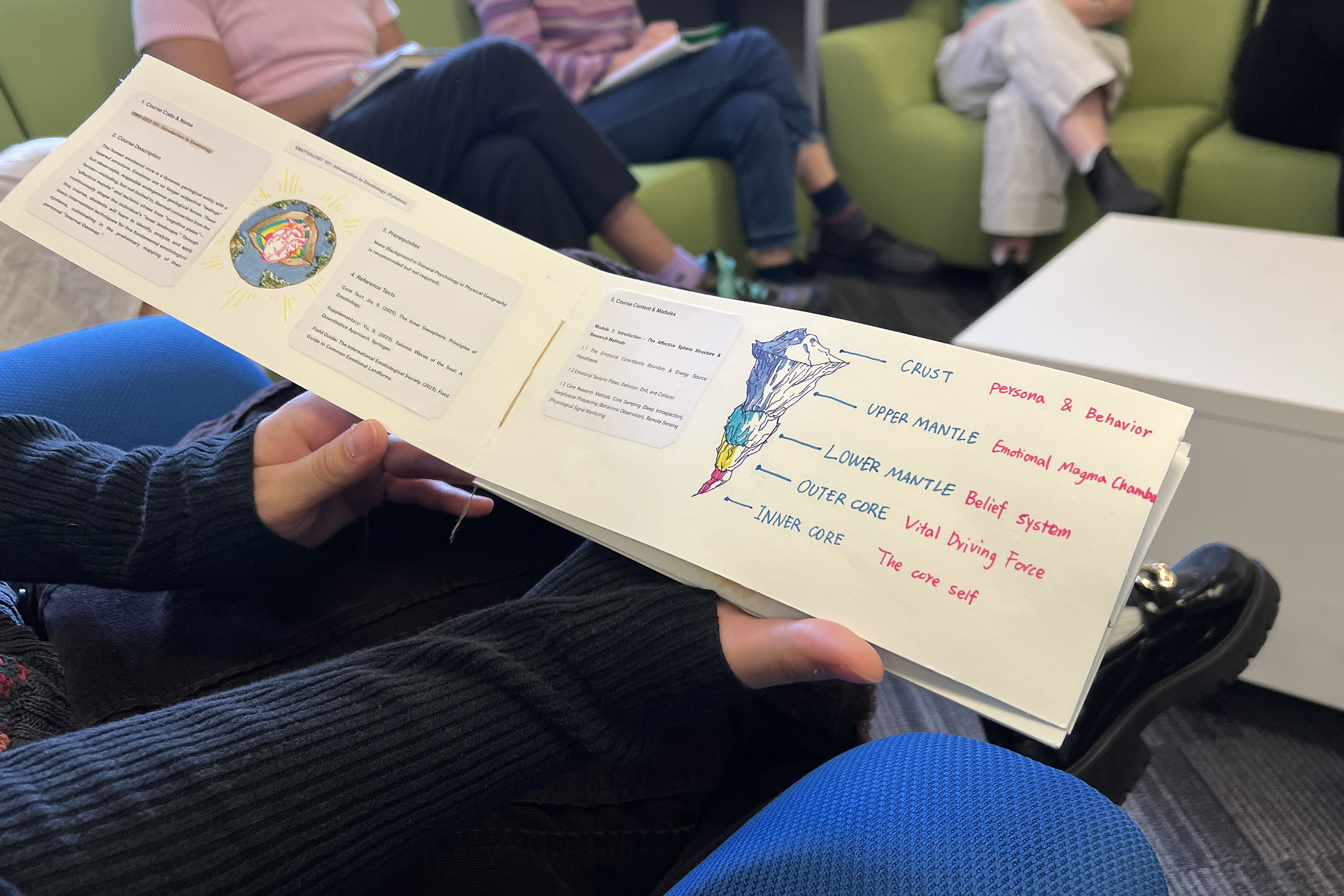

Industrial Design major Eileen Lee 26 ID was also thinking about accessibility when she devised an interactive website that would serve as the syllabus for a course about memory and nostalgia. The site is built around her favorite comfort food recipe: kimchi jjigae. Images of the dish’s ingredients bring up poetic, handwritten prompts related to the class. When the user clicks on a packet of red pepper flakes, for example, they see “A spark of heat—the memory that still burns a little.”
“The wayfinding aspect is so interesting,” one student noted. “It’s not linear, and neither is memory.” Another student wondered if the syllabus could more closely reflect the impermanence of memory, perhaps by looking different every time the user opened it.
Grad student Jiayu Shi MAE 26 created a textural illustrated picture book that would serve as a classroom resource for high school students struggling to navigate complex emotions. The project, Emotiology (a word she made up), pairs emotions with geological features: joy with a rainbow, loneliness with the desert, anger with a volcano. One student said she could imagine the book inspiring creativity among teens, and another noted that “the sensory nature of the illustrations is really calming.”
As the semester continues, students are exploring the relationships between their studio and teaching practices and honing in on their personal teaching philosophies. They’ll create final projects expressing those ideas that may take any shape—from installations, videos, and paintings to workshops, poetry, and parties.
Simone Solondz / photos by Kaylee Pugliese
November 6, 2025
